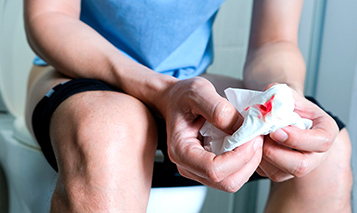
Is your child losing her edges or suffering from thinning hair and bald patches on her scalp? Don’t worry, there are treatments that can help your child regrow her hair.
Causes of Hair Loss in Children
There are a variety of reasons your child may be losing her hair. One of the main causes of hair loss in children under 26 months is tension or traction alopecia from braiding their hair too tightly or binding their hair too tight with rubber bands and other hair accessories.
Medical reasons for hair loss in children include endocrine problems, such as hypothyroidism (under active thyroid function).
Tinea capitis, also known as ringworm of the scalp, looks like round or oval scaly patches on the scalp where the hair has broken off. You might also see black dots on the scalp.
Treatment for Tinea capitis includes oral anti-fungal medications, such as griseofulvin.
Ringworm is contagious, so you should disinfect anything your child touches, such as combs, brushes, hair accessories, etc. Wash pillow cases, sheets and towels in hot water separately from other household laundry.
Alopecia areata is caused by your child’s immune system attacking the scalp and hair follicles. It is characterized by round or oval smooth, shiny patches of skin on the scalp. Smooth, shiny skin means the hair follicle is destroyed. There is no cure for Alopecia areata but treatment can prevent the disease from progressing to Alopecia Totalis — total loss of all the hair on the head. A small percentage of children will also suffer total hair loss on their body. Alopecia areata non-contagious, meaning it can’t be transferred by touch to other children in the family.
Treatment for young children with Alopecia areata includes steroidal creams or ointments on the bald patches to decrease the inflammation. Minoxidil (Rogaine) is used in addition to steroidal creams. Hair growth may return in 8-12 weeks.
Trichotillomania occurs when young children pull, pluck or twist their hair. This is more common among children who suffer from stress, anxiety, and mental or emotional problems. Trichotillomania can be triggered by a stressful event in a child’s life, such as parents divorcing or having both parents who are narcissists who suffer from mental or emotional problems.
Treatment for Trichotillomania includes counseling or antidepressants.
Tellogen Effluvium is also caused by sudden stress that interrupts the normal growth cycle of hair and the hair enters prematurely into the resting phase (tellogen phase). 6-8 weeks later, the hair sheds excessively, leaving the young sufferer with thinning or balding hair.
There is no treatment for Tellogen Effluvium. Hair growth may resume normally after the stressful event is over.
Hair loss in children can also be caused by nutritional deficiencies. Some parents are too busy with their own careers to monitor their child’s food intake. As a result, their children subsist mainly on a diet of sodas, fast food, sugary snacks and other sweet delights that are lacking in hair vitamins, such as Biotin, B Complex vitamins and Zinc.
If you believe your child suffers from hair loss or thinning hair, do not attempt to treat the problem yourself with home remedies. Take the child to a licensed dermatologist who can diagnose the problem and suggest a treatment plan.
This has been your Medical Minute.
*Please note: Photos accompanying Medical Minute Posts are used for illustrative purposes only
DISCLAIMER
Any medical information published on this blog is for your general information only and is not intended as a substitute for informed medical advice. You should not take any action before consulting with your personal physician or a health care provider. Sandrarose.com and its affiliates cannot be held liable for any damages incurred by following advice found on this blog.
More Info On the Web
Hair Loss in Children: Causes and Treatment – WebMD
Alopecia Areata in Children – National Alopecia Areata Foundation
Children Hair Loss – American Hair Loss Association
Hair Loss (Alopecia) – HealthyChildren.org





